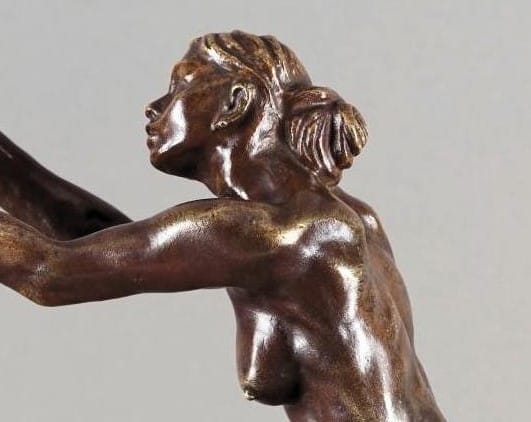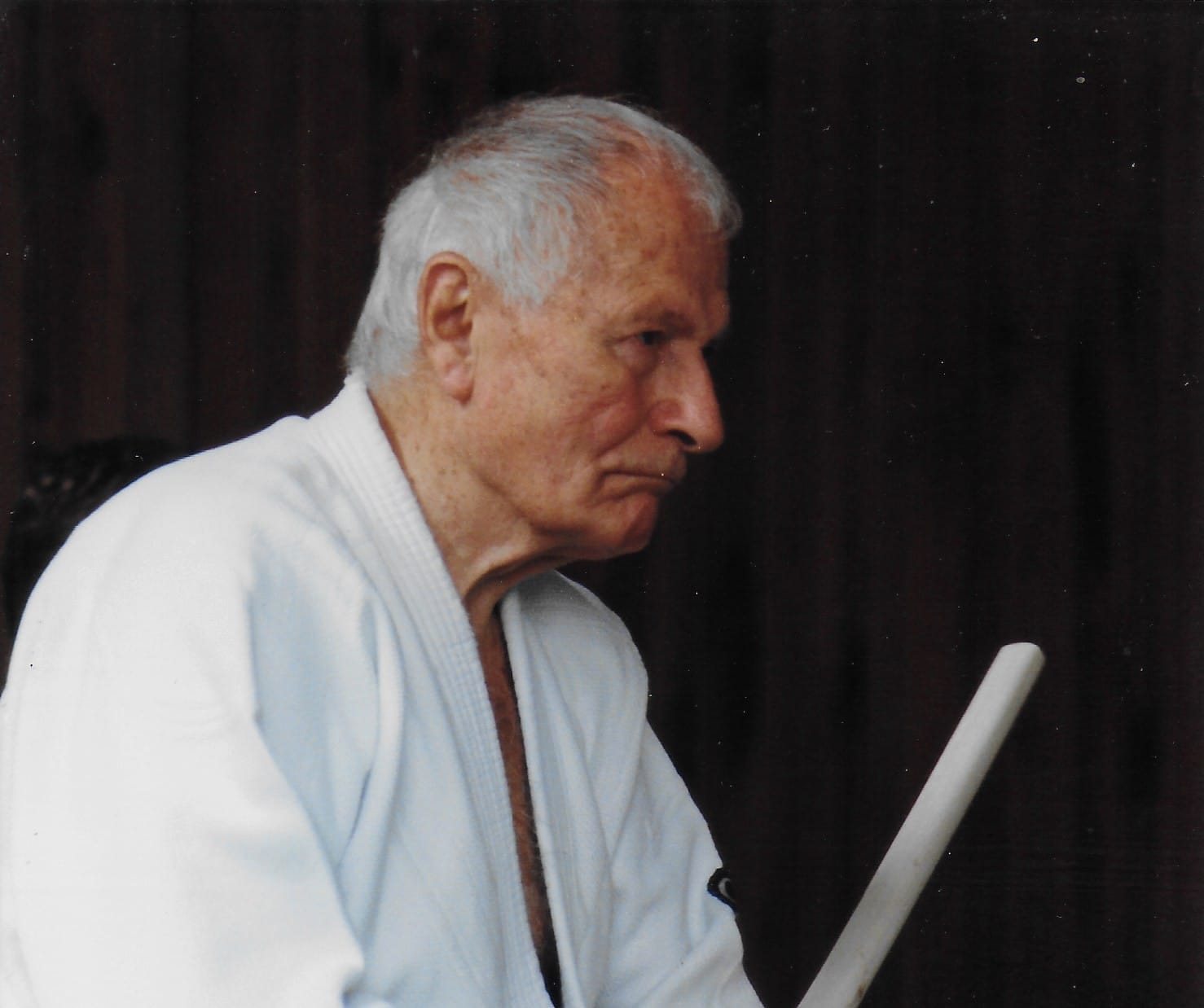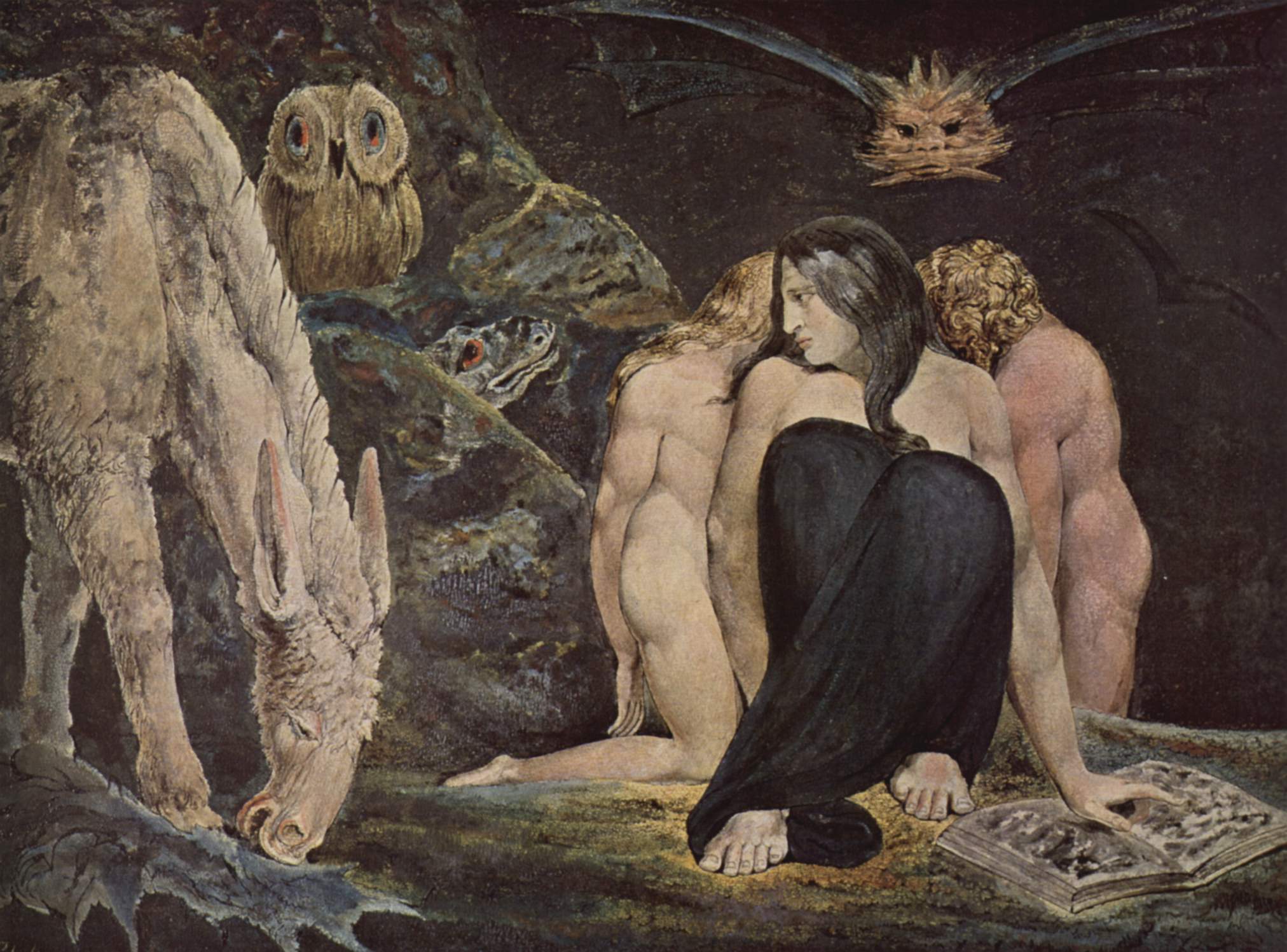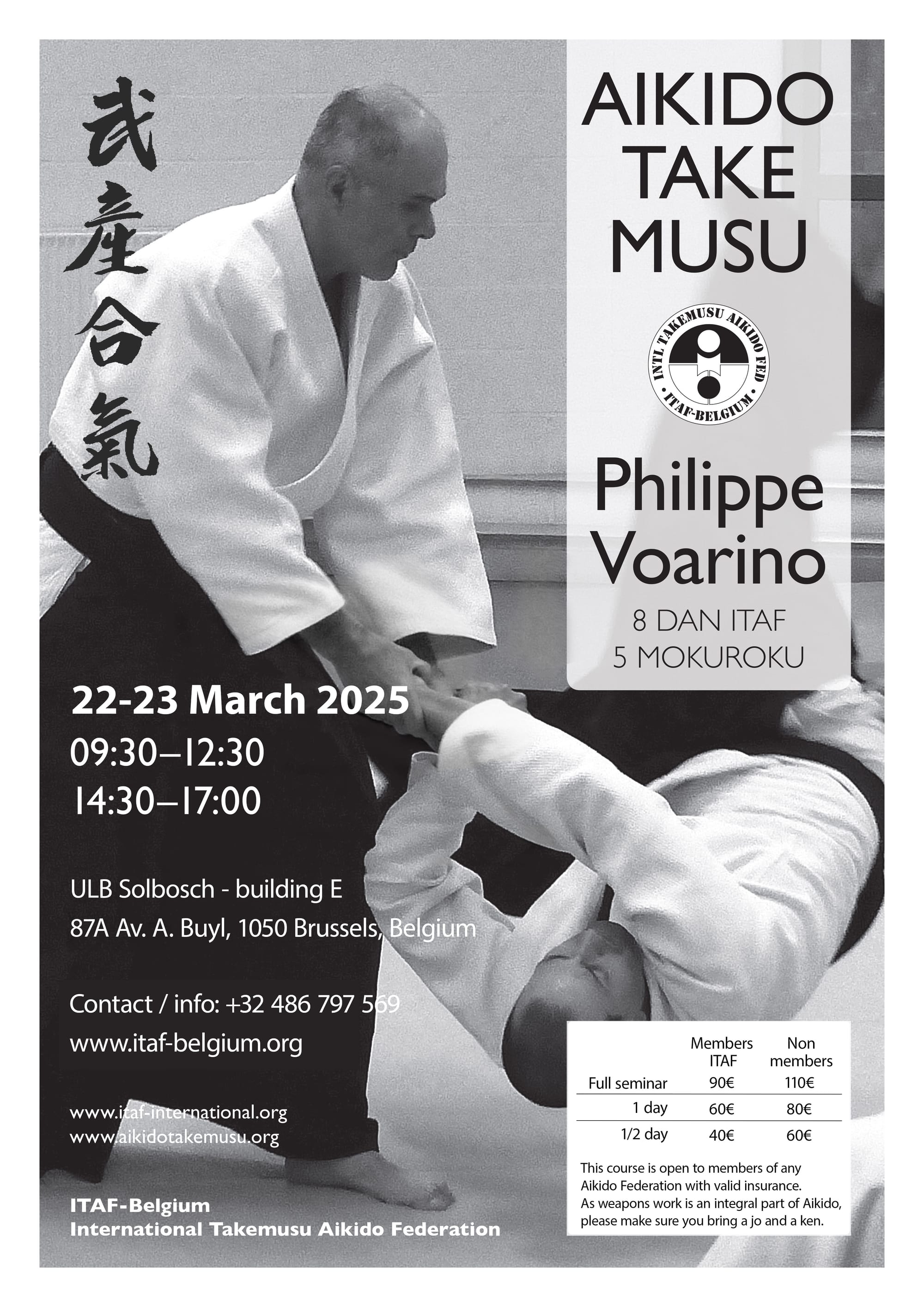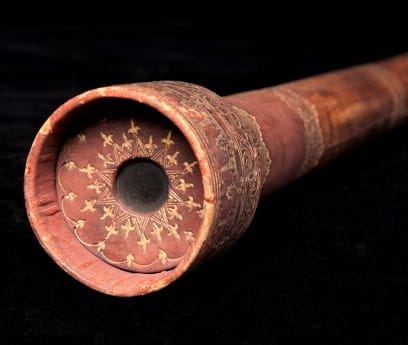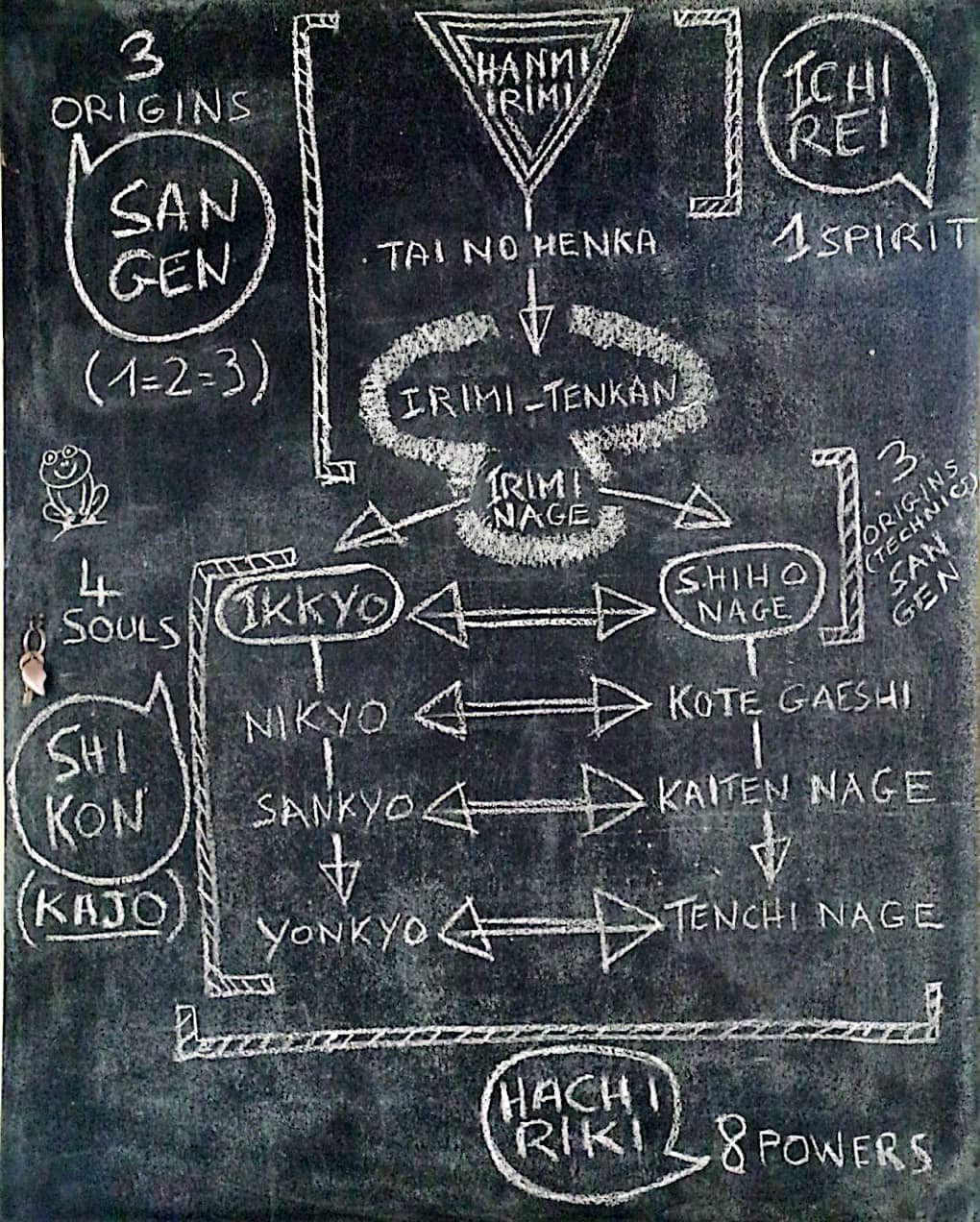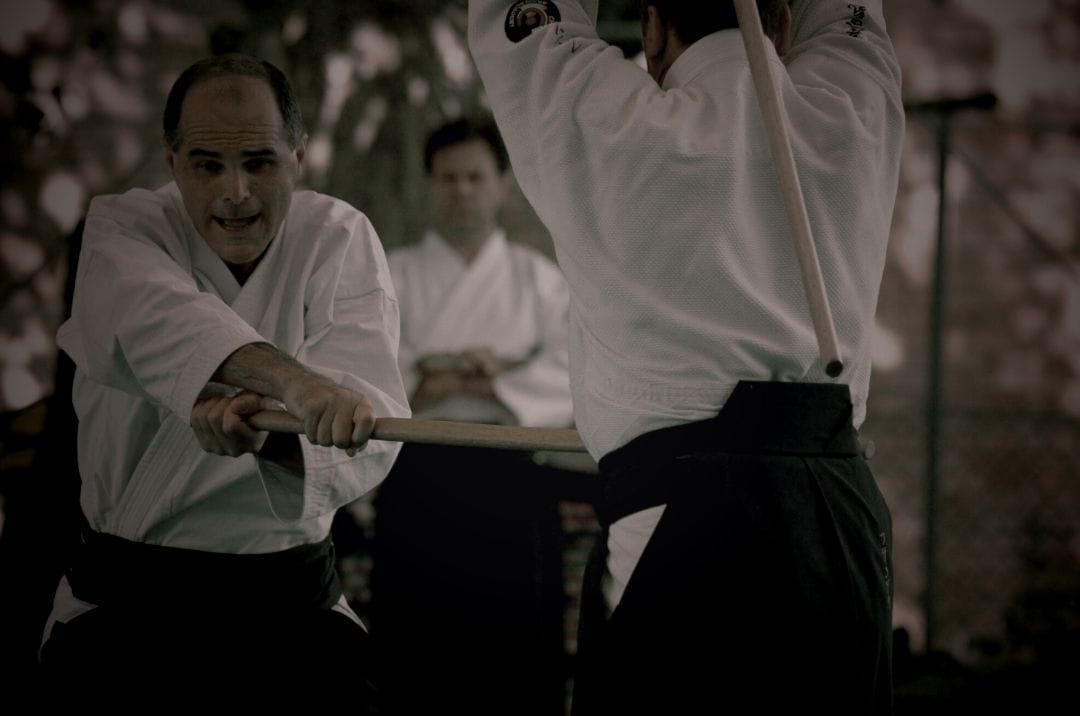Camille (Question asked when the article “Kawaii Aikido” was published) :
Yet Ueshiba lived at a time when video cameras already existed, and the images show very similar things... As far as I'm concerned, it's not the name that should be changed, but its martial pretensions. It's more a form of gymnastics and “personal development”, even a religion depending on the degree of practice... On the other hand, selling it to people as a means of self-defense seems to me to be rather problematic at a time when violence and aggression are becoming real and palpable dangers for everyone...
Hello Camille,
I received this comment from you on the “Kawaii Aikido” article. For some reason it didn't stay on the YouTube site. But I found your comment interesting in more ways than one, not least because it pointed to a major cause of the general misunderstanding of Aikido : its lack of definition. In order to respond to this, while giving sufficient space to the volume of this response, I decided to write it for you via this editorial on the TAI website, hoping at the same time to provide food for thought for other readers.
As it happens, I recently listened to an interview with Stéphane Benedetti, with all the attention and interest one might have for a long-lost buddy. To the first question of this exercise, “What is Aikido ?”, Stéphane replied with a smile, “I don't know”. His anarcho-libertarianism being matched only by his talent for cooking sardines, I'm not overlooking the provocative aspect of this answer. But there is also the wisdom of a man who has been wearing out the Aikido tatami for over 50 years, because as soon as you name something you miss it, any definition is reductive, and Aikido is vast.
However, I believe that the prudence that comes from long practice does not prevent us from offering some clues, with humility of course. For there is much confusion and misinterpretation surrounding Aikido. I'm going to try to clear up these leads for you, Camille.
One comment before I start, however.
You criticize me for “selling (Aikido) as a means of defense”. The word is unpleasant, mercantile. You could have written “to propose as a means of defense”, but you used “to sell”. As the general quality of your writing sufficiently demonstrates that you are not ignorant of the meaning of words, and that you don't choose them at random, you oblige me to mention something that it would be ridiculous to put forward without reason, but which deserves to be recalled in this context.
I'd like to make it clear that nothing on the TAI site is for sale. This site has been entirely free of charge since its creation 20 years ago. It receives no subsidies, refuses advertising and therefore receives no funding of any kind, not even from YouTube. All site contributors are 100% volunteers, starting with the webmaster and myself. Pierre Chassang's book was recently put on sale, but at cost price, for its own sake and in memory of Pierre. The TAI site is in no way a profit-making venture, and if there is a “Member” category, it's only a way of thanking all the readers who support the site by agreeing to receive the newsletter. Subscription is free and can be cancelled at any time.
This is to say that I'm not “selling” Aikido on the TAI site, Camille, I'm just trying to make it better known, because I find myself in a position and at a time in my life when it's not totally incongruous to do so.
You find “problematic” this presentation of Aikido as a “means of self-defense” at a time when “violence and aggression are becoming real dangers”. I've gone back and forth on this phrase a lot, trying to make sense of it, because it's ambivalent. To understand what I mean, imagine that I assert, by gratuitous hypothesis and for the sole purpose of example, that you are “sensitive to violence”. Well, by that I mean two very different things. The first is that violence upsets you, that it affects you. The second is that violence seduces you, that it attracts you. There's an ambiguity of this kind in your criticism, and two possible interpretations.
The first, quite classic, would be that we're deceiving people by attributing “martial pretensions” to what is basically just a “form of gymnastics” aimed solely at “personal development”, to use your wording. Let me leave aside your reference to religion, as this would take us too far into the discussion.
I would say, in response to this first aspect of your criticism, that you are perfectly right to regard the practice generally known as Aikido as a form of gymnastics. Because everything you see, all the forms taught under the name of ikkyo, kote gaeshi, shiho nage, irimi nage, all the kumitachi, all the kumijo, etc. are indeed gymnastics. They are, in fact, preparatory gymnastics for Aikido, a sort of vast warm-up in time before entering the heart of the matter. This warm-up may last 20 years or more, but access to Aikido is not automatic. And in the majority of cases, the practitioner never passes through the narrow door that leads to the Founder's Takemusu, stopping forever at the preparation stage, convinced nonetheless, at the moment of hanging up his kimono (keiko-gi), that he has devoted his life to Aikido. That's how it is, nothing democratic about it, elitism perhaps as we say today, I don't have an opinion, I'm just observing.
The misinterpretation you're making isn't that you're mistaking this preparatory gymnastics for gymnastics, since that's what it is, and bravo for having seen it, but that you're giving credence to the classic confusion that believes the moon is made of green cheese and takes this gymnastics for Aikido, which it isn't, or not yet.
The argument that allows you, you think, to go in this direction is that “the images (of Ueshiba) show us things very similar” to what is done today. But seen from a distance, Camille, a donkey is also very similar to a horse. And even if your argument could be accepted, I remind you of the one O Sensei used to refuse to demonstrate Aikido in front of the Imperial family in the first place: “I can't show the Emperor a lie”. Hiro-Hito then said “Well let him show me the lie anyway !” and the demonstration took place (Gozo Shioda, who was uke for the occasion, went into a coma from exhaustion in the 24 hours that followed). Aikido is such that it's impossible to show it, so the Founder himself could only show a lie, that is the most perfect possible version of Aikido gymnastics, similar in this sense to the worst that's being done in the field today. From this point of view, you're not wrong, because there's basically little difference between a horse and a donkey.
However, gymnastics, whether poorly made or at its best, is only as good as gymnastics, Aikido goes beyond that. How, then, to speak of that which cannot be visualized ? Please accept to take my hand for a moment on the path I've been proposing for a long time, on this site or elsewhere. We might then have a chance to answer the second meaning of your criticism, which I believe is the deeper of the two.
As many of us as there are on this planet, from the simplest mind to the most brilliant of our thinkers, we ignore the meaning of our birth, we ignore that of our death, and between these two extremes we ignore the meaning of being, and therefore of what we are. All the efforts of thought over the last 5,000 years have done nothing to change this, and religions were born out of this immense gap. In the great precariousness of our knowledge, compounded by our ignorance of the causes (if any) of the world around us, is there a way of being-in-the-world that is anything other than hazardous or random ?
In ancient times, the traditions of mankind were able to shed some light on the attitude a man should adopt in his relationship with the world. But traditions weakened over the centuries, and disappeared for good with modernity. However, the essence of this knowledge has not disappeared with it, for it concerns the very nature of being and the subtle laws that organize it.
Master Ueshiba's colossal undertaking was not to perfect a few clever martial techniques capable of throwing people to the ground or knocking them out with a bokken, his genius was to find one of the lost threads of tradition. If one end of the thread unwinds the skein, the same end allows it to be reconstituted. By dint of his work, the Founder of Aikido brought back to light a part of the lost wisdom of the East. In this sense, he didn't invent Aikido, he brought it to light.
As it happens, Camille, this forgotten fragment of tradition belonged to the art of war. Other fragments undoubtedly existed, but for certain reasons linked to the particularity of his life, Ueshiba had access to this one : the subtle laws of being-in-the-world and of the harmony of the spheres revealed themselves to him in the rigor of martial logic and reason.
Now we need to understand this : the physical laws that determine a warrior's optimal movement on the battlefield are no different from the laws that organize the growth of a sunflower, direct the rotation of planets and the movement of galaxies. All these things are in a relationship of a homothetic nature. To study one and conform to it is to understand the others, for the principle is common.
The study of Aikido is the study of these laws applied to the movements of a warrior, laws which are still invisible in the gymnastics preparatory to Aikido. These laws have been highlighted in a martial context, that is, in a context where two parameters are fundamental, and fundamental together : efficiency and safety. Ueshiba didn't invent anything, but he found the higher reason for Aikido movements in the permanent relationship between these two parameters, which he used like a compass.
I've brought you to this point, Camille, to make you understand that any conception of Aikido that implies the extraction of the two fundamental notions of safety and efficiency would be artificial, insofar as they are constitutive of an art that would not have existed without them. Aikido is born from the martial union of efficiency and safety, just as a child is born from the union of chromosomes.
This brings me to the second meaning of your criticism, which interests me more than the first.
Your comment suggests that you don't like violence, perhaps are you even working to prevent it, or to deal with its consequences. And the idea that guides you, correct me if I'm wrong, is that by presenting Aikido as “a means of self-defense”, one is - eye for eye, tooth for tooth - dangerously adding violence to a world that is already far too violent.
Such a perception misses the very nature of Aikido, which places it outside the realm of such violence. Aikido is neither a manifestation of violence nor of non-violence, but merely a balance of opposing forces.
Of course it's possible to fight with Aikido, but it's just as possible to avoid combat thanks to it. These are secondary choices, just as “personal development” or “religion” are secondary. And my purpose is not in any way to consider the effects or the applied forms of Aikido. In fact, I challenge you to find in any of the 600 articles I've written on the TAI site, the idea that Aikido is a method of personal defense, “the defense of the weak against the aggressor” as Moshe Feldenkrais once wrote of Jiu-jitsu.
So what's the point? you might ask.
Well, I'm interested in what constitutes Aikido as an art, what brought this art into the world, what made it possible and what constitutes its essence, if we want to talk ontology. Because Aikido has no “martial pretensions” Camille, it has a martial ontology, which is quite different, it was born from the art of war, as I said. And this is why no manifestation of Aikido is possible without respect for the martial logic that presided over its genesis. In the same way, music cannot be conceived without the rhythm that is its founding element.
So I've come to the end of my answer, only to end up not giving you a definition of Aikido, just as Stéphane Benedetti did in his interview. His truth was brutal, I've brought you mine more gently, but it's no different in substance, I've just taken a detour to get to the same point. If this detour has made the landscape around Aikido a little clearer for you to see, then I haven't wasted my time.
Please accept as a wink the reference to Camille Claudel and this thumbnail sculpture of her.
Thank you for your interest.
Philippe Voarino

